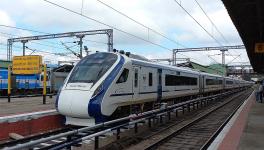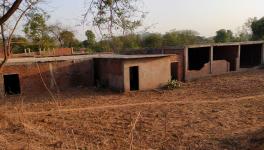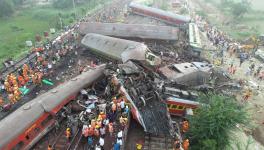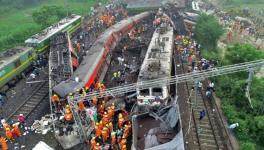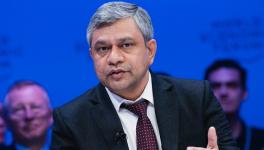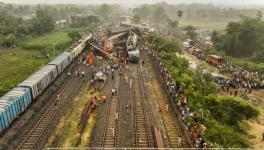Can Cash-Strapped Indian Railways Afford 100% Electrification?
Experts call for a rethink as the proposal cleared by the Cabinet would require heavy capital investment of nearly Rs 35,000 crore over the next 4-5 years.
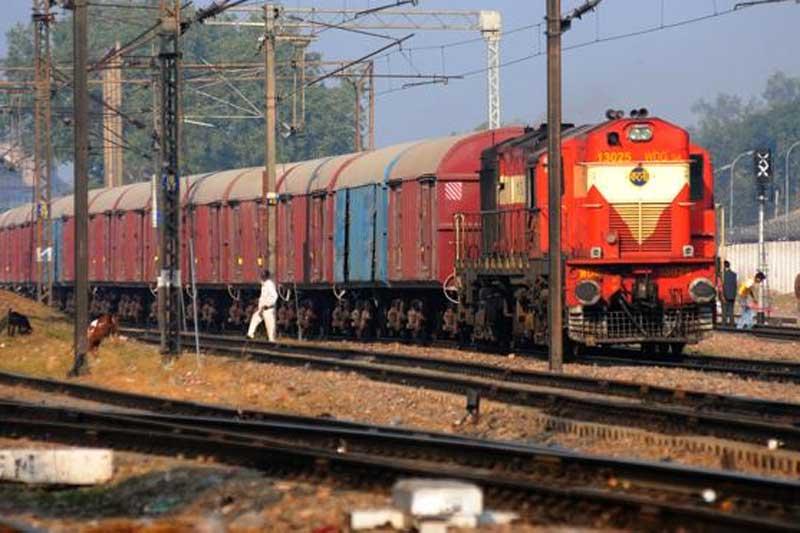
Image Courtesy : Financial Express
New Delhi: The government's decision to go for 100% electrification of its vast rail network within the next 3-4 years is a huge strategic shift which needs a rethink as it has raised many pertinent questions.
Since 100 per cent electrification involves massive capital investments, the cash-strapped Indian Railways should carefully consider the way forward, experts feel.
The concerns follow a recent decision by the Cabinet Committee on Economic Affairs (CCEA) approving the proposal for electrification of broad gauge routes comprising 108 sections covering 13,675 route kilometres (16,540 track kilometres) at a cost of Rs 12,134.50 crore.
While the electrification work is already sanctioned for 17,000 km route in the next three years, with the 13,675 km clearance by the CCEA the remaining part is also covered now. The Railways aim to complete the electrification by 2021-22.
The government's argument is that this electrification will reduce the Railways fuel consumption cost by over Rs 10,000 crore a year. Besides, eliminating diesel consumption will reduce the demand for crude oil and hence reduce the country's import bill.
In addition, the 100% electrification is also expected to lead to other benefits, such as de-carbonisation of the Railways; making the rail corridor green, thereby significantly reducing its carbon footprint.
However, experts differ with this view as they feel that considering the prevailing cash-crunch being faced by the Railways, the national transporter can ill-afford this heavy capital investment project.
"100% electrification is not required. Only the main trunk routes and important branch lines should be electrified for effective rail operation," said former Railway Board Member (Traffic), Vinoo Mathur, adding that electrification requires major capital investment, hence the issue needs careful consideration.
The Marhowra project
"Railways have already invested in modernising diesel locomotive factory. A new diesel locomotive factory is coming up at Marhowra in Bihar. How do you balance it?" he asked.
The Marhowra project, a joint venture between the Indian Railways and American multinational General Electric (GE) to supply and maintain modern diesel-electric locomotives of 4,500 horsepower (HP) and 6,000 HP to the public transporter, was announced in November 2015. GE has the mandate to manufacture 1,000 locomotives as per the contract.
The first locomotive built by GE as part of a $2.5 billion deal to supply 1,000 such engines over 10 years to the Indian Railways has already arrived in India.
On fossil fuel consumption, Mathur said the Railways was using diesel very efficiently.
Another former Railway Board Member (Mechanical), Hemant Kumar, said there was the need for a balance between the two as diesel and electric locos have their own advantages.
A 'Huge Strategic Shift'
Complete electrification is a huge strategic shift, given that for years both diesel and electric traction co-existed. As a result, substantial assets pertaining to these traction technologies have been created over the natural course of time.
These include rolling stock, manufacturing factories, maintenance workshops and a nationwide supply chain ecosystem.
Kumar further said that where there was a surplus of electricity, one could afford to go for complete electrification, but not in the Indian Railways which is facing a power-deficit situation here.
Likewise, many in the Railways believe that there is a need to revisit the issue of 100% electrification and are questioning the economic feasibility of the mission, including estimates on savings because of reduced fuel consumption and the amount of emission reduction.
There are about 5,800 diesel locomotives and about 5,300 electric locos. Currently, about 36% of the total route-km is being electrified, which is about 30,212 route km out of the total 66,6877 route km in the Railways.
The complete phasing out of diesel locos will require electrification of a large number of private sidings. Many of these private sidings with less traffic may not agree to additional capital expenditure for electrification, leading to diversion of goods to road traffic.
Massive Capital Investment Needed
According to an estimate, full electrification will involve massive capital investments of Rs 1 lakh crore within a short period of time, which include route electrification and replacement of diesel locos among others.
The total capital expenditure for electrification would be at least Rs 35,000 crore over the next 4-5 years.
Besides the electrification cost, in order to replace diesel locos with electric ones, the Railways would require an additional Rs 40,000 crore. The asset holding value of existing diesel locos is likely around Rs 15,000 crore, after taking into account the average depreciation value.
While coal-based emission is higher, sourcing energy from nuclear or hydroelectric power can substantially bring down the emission level of electric traction.
Diesel traction helps the Railways put those areas on the rail map where getting electric traction may have been otherwise difficult. States with difficult/hilly terrains such as Jammu & Kashmir, North East and West Rajasthan are some examples.
In case of major power breakdown, the Railways must maintain the availability of diesel locos for running rescue operations.
About 75% of the country's coal demand is currently met from domestic production. The deficit of 25%, which amounts to about 200 million tonnes of coal, is met through import. Hence, creating additional power demand may cause recurring outgo of foreign exchange.
Therefore, there are good and sufficient reasons for a deeper economic and financial analysis of any future investment in rail electrification, the experts feel.
Get the latest reports & analysis with people's perspective on Protests, movements & deep analytical videos, discussions of the current affairs in your Telegram app. Subscribe to NewsClick's Telegram channel & get Real-Time updates on stories, as they get published on our website.











